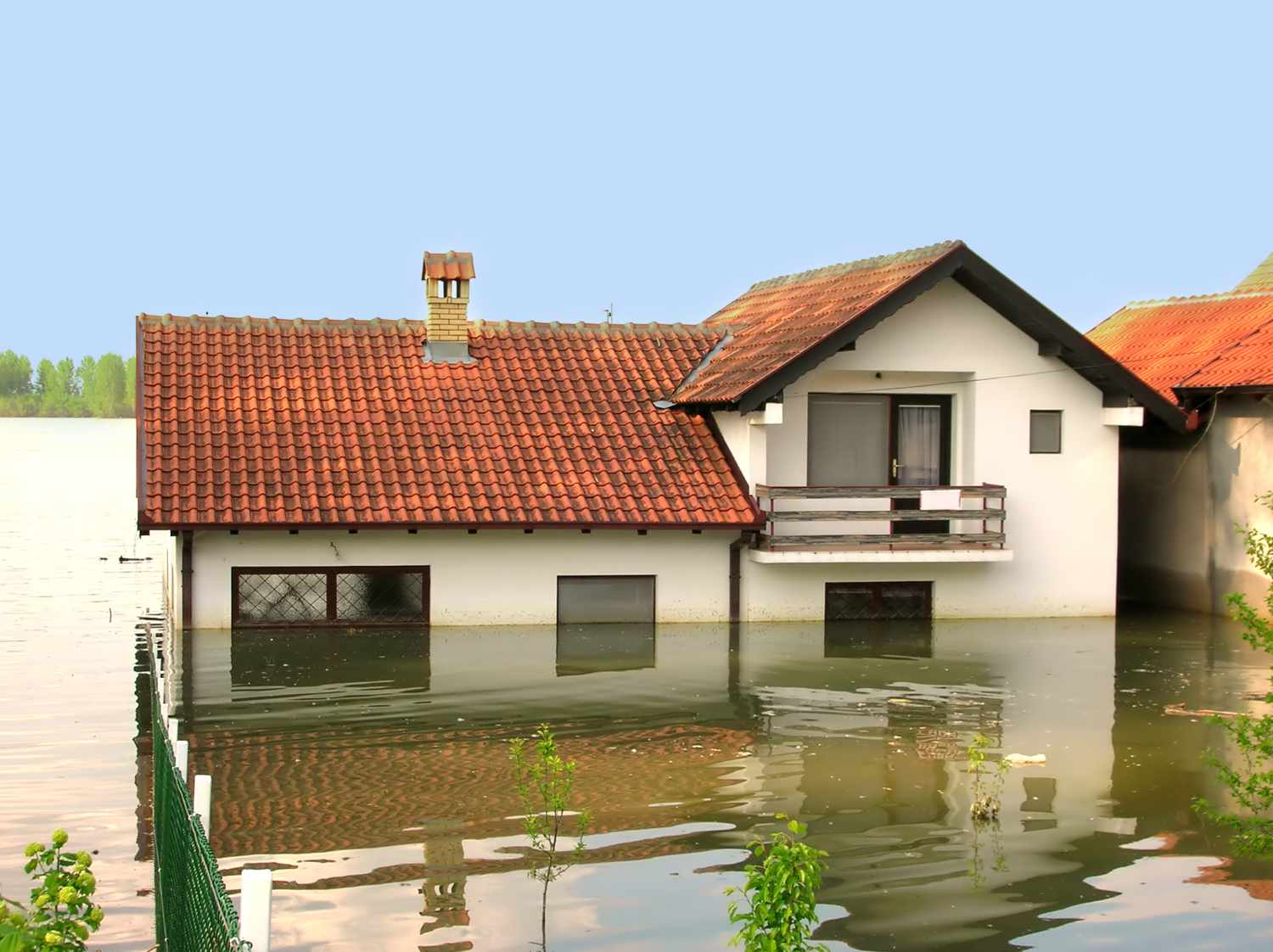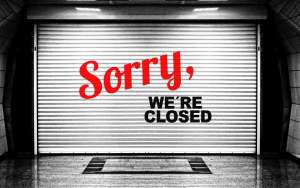What is Flood Insurance?
Flood insurance is a type of insurance coverage that is designed to protect homeowners and property owners from financial losses due to flood damage. It provides compensation for damage to buildings and contents caused by flooding, which is not typically covered by standard homeowner’s insurance policies.
In areas at high risk of flooding, such as high-risk flood zones, flood insurance is often required by lenders in order to secure a mortgage. The cost of flood insurance depends on various factors, including the location and flood risk of the property, the coverage options chosen, and the amount of coverage needed.
Why Should Homeowners Consider Flood Insurance?
Homeowners, regardless of their location, should seriously consider investing in flood insurance. While some may think that living outside high-risk flood zones exempts them from the need for coverage, the reality is that flood damage can happen anywhere and at any time. Many people in the Orlando area discovered this when areas not recognized as being a flood risk were flooded after the hurricane.
Floods can be caused by heavy rainfall, storm surges, or even a burst pipe in your home. The financial risks associated with flood damage are significant, with repair costs often reaching tens of thousands of dollars. Without flood insurance, homeowners may have to shoulder these expenses out of pocket, potentially putting them in a dire financial situation.
Having flood insurance offers invaluable benefits to homeowners. It provides coverage for property damage, repairs, and replacement of belongings like furniture and appliances that may be destroyed or damaged by floodwaters. This can alleviate the financial burden of flood damage and help homeowners get their lives back on track more quickly.
One of the key advantages of flood insurance is peace of mind. Knowing that you are protected against the unexpected allows homeowners to focus on their families and their homes, without constantly worrying about potential flood events. Flood insurance offers a safety net, ensuring that you have the necessary resources to recover and rebuild after a flood.
The National Flood Insurance Program (NFIP)
The National Flood Insurance Program (NFIP) is a crucial resource for homeowners seeking flood insurance coverage. Established by the federal government, the NFIP aims to reduce the financial impact of floods by offering affordable insurance policies to property owners in high-risk flood areas.
The National Flood Insurance Program (NFIP) offers flood insurance policies to property owners in high-risk flood areas. Through the NFIP, homeowners can obtain vital protection against flood damage, ensuring that they are not left with significant financial burdens in the aftermath of a flood event. This program provides coverage for both building and contents, including structural repairs, furniture replacement, and other damaged or destroyed belongings due to flooding.
By participating in the NFIP, homeowners can have peace of mind knowing that they have access to the necessary resources to recover from the devastating effects of a flood. The NFIP also works in partnership with communities to implement floodplain management measures, such as flood risk assessments and floodplain mapping, to reduce flood risk and promote safer, more resilient communities.
What Types of Coverage Does the NFIP Offer?
The National Flood Insurance Program (NFIP) offers flood insurance coverage to a wide range of individuals and properties. Homeowners, renters, and business owners are all eligible to purchase flood insurance through the NFIP.
For homeowners, the NFIP provides coverage for both the structure of the home and its contents. This includes residential properties such as single-family homes, condominiums, and townhouses. Coverage also extends to certain types of manufactured homes that meet NFIP guidelines.
Renters can also obtain coverage for their personal belongings, such as furniture, appliances, and clothing. This allows renters to protect their valuable possessions in the event of a flood.
Business owners are eligible to purchase flood insurance for their commercial properties, including office buildings, retail stores, and restaurants. This coverage helps protect their businesses from potential flood damage and allows for a quicker recovery in the aftermath of a flood event.
It’s important to note that not all properties are eligible for NFIP coverage. Properties located in high-risk flood areas may be required to have flood insurance in order to qualify for certain federally-backed loans. However, even properties outside of high-risk zones can benefit from flood insurance, as flooding can occur in any location.
Overall, the NFIP offers a range of coverage options to protect homeowners, renters, and business owners from the financial impact of flood damage.
How Much Does NFIP Cost?
The cost of flood insurance through the National Flood Insurance Program (NFIP) can vary depending on several factors. These include the type of coverage chosen, the location of the property, the flood zone designation, and the amount of coverage needed. Understanding the potential cost of NFIP coverage is essential for homeowners seeking to protect their properties from flood damage.
NFIP offers two types of coverage: structure insurance and contents insurance. Structure insurance covers the building itself, including its foundation, walls, electrical systems, plumbing systems, and major appliances like water heaters and window blinds. Contents insurance, on the other hand, protects personal belongings such as furniture, appliances, clothing, and valuable items like original artwork and precious metals.
The coverage limits for structure insurance and contents insurance differ. Structure insurance coverage is limited to $250,000, while contents insurance coverage is capped at $100,000. Homeowners who require coverage beyond these limits can explore additional coverage options offered by private insurance companies. These companies can provide excess coverage to bridge the “gap” between the NFIP limits and the actual value of the property and belongings.
It’s important to note that the cost of flood insurance can vary significantly from one property to another, so it’s advisable to consult an insurance agent for an accurate quote based on the specific details of the property.
Is an Elevation Certificate Required for NFIP Coverage?
In order to determine accurate premiums, it is important to consider the specific flood zone designation and the associated flood risk. Factors such as the base flood elevation and the lowest floor elevation of the building can impact the cost of coverage.
An elevation certificate is not required for all NFIP policies. However, it can be a valuable asset for property owners in high-risk flood areas. The certificate provides crucial information regarding the elevation of the building in relation to the estimated floodwater level. It helps insurance agents in accurately determining flood insurance premiums based on the specific characteristics of the property.
When considering flood insurance coverage, property owners should take into account the NFIP cost, flood insurance premiums, flood zone designation, coverage amount, and building characteristics to ensure they have the appropriate protection in place for potential flood events.
Private Insurance Companies and Flood Insurance Policies
When it comes to flood insurance, homeowners have options beyond the traditional National Flood Insurance Program (NFIP) policies. Private insurance companies also offer flood insurance policies that provide coverage for flood events. These policies are often tailored to meet the specific needs and preferences of property owners. They offer a variety of coverage options, including building coverage, personal property coverage, and additional living expenses coverage.
Private insurance companies take into account factors such as the property’s location, flood risk, and the value of the property and its contents to determine the cost of flood insurance premiums. Property owners can work with insurance agents who specialize in flood coverage to find the best policy that suits their needs and budget.
It is important to carefully review and compare different policies and coverage limits offered by private insurance companies to ensure that the property is adequately protected against the risks of flooding.
Who Can Purchase a Private Flood Insurance Policy?
Anyone can purchase a private flood insurance policy, regardless of whether the property is located in a high-risk flood zone or not. Private insurance companies have more flexibility in determining the rates and coverage options they offer. This means that homeowners who may not qualify for NFIP coverage or who are looking for additional coverage beyond what NFIP offers can turn to private insurance companies.
Private flood insurance policies can provide similar coverage to NFIP policies, including coverage for the building structure and personal property. However, it is important to note that the cost of private flood insurance may vary depending on factors such as the location of the property, the flood risk, and the coverage limits desired.
What Types of Coverage are Available Through Private Insurers?
One type of coverage available through private insurers is building coverage. This covers the structure of the home, including the foundation, walls, and roof. It helps homeowners repair or rebuild their property in the event of flood damage.
Another type of coverage is personal property coverage. This covers the belongings inside the home, such as furniture, appliances, and electronics. Private insurers provide protection for these items in the event of flood damage.
Additionally, private flood insurance policies may offer coverage for additional living expenses. This means that if a homeowner is unable to live in their home due to flood damage, the policy can cover the cost of alternative accommodation, food, and other necessary expenses.
It is important to note that the specific types of coverage available and the extent of coverage may vary between private insurance companies. Homeowners should carefully review their policy and discuss their coverage needs with an insurance agent to ensure they have the right level of protection for their property and belongings.
How Much do Private Flood Policies Cost?
When it comes to the cost of private flood insurance policies, the amount can vary based on factors such as the location of the property, its elevation, proximity to water bodies, and the desired level of coverage. Homeowners should reach out to an insurance agent to get quotes and compare prices from different private insurance companies.
Understanding the types of coverage available and exploring private flood insurance options can help homeowners make informed decisions about protecting their property from flood events.
Risk Factors for Homeowners to Consider When Purchasing Flood Insurance
When purchasing flood insurance, homeowners should carefully consider several risk factors that can impact their coverage and premiums. One crucial factor is the location of the property, specifically if it is in a high-risk flood zone or a high-risk area prone to flooding.
Another important consideration is the elevation of the property, as properties located below the base flood elevation are more susceptible to flood damage. The proximity to water bodies, such as rivers or lakes, also plays a role in determining the risk of flooding.
Additionally, the condition of the plumbing systems, water heaters, and septic systems in the property can affect the likelihood of flood damage. Homeowners should also take into account the contents of their home, such as valuable items, original artwork, and precious metals, and consider if they need additional coverage beyond the building coverage.
Finally, the cost of flood insurance, the coverage options available, and the expertise of insurance agents should also be considered when purchasing flood insurance. By carefully considering these risk factors, homeowners can make informed decisions about protecting their properties from the devastation of floods.
Where are High-Risk Areas for Flood Damage Located?
High-risk areas for flood damage are typically located in regions with a higher likelihood of flooding. These areas are defined as high-risk flood zones and are associated with a greater risk of frequent and severe flood events. It is essential for homeowners to understand their flood risk and take appropriate measures to protect their property.
While flood insurance premiums in high-risk areas can be costly, there are ways to potentially lower the cost. Building elevation is an effective method as it reduces the risk of flood damage. Proper flood openings can also make a difference in reducing premiums. These openings allow water to flow through the building, equalizing the pressure and minimizing structural damage.
Understanding the factors that influence the cost of private flood insurance in high-risk areas can help homeowners make informed decisions about their coverage needs. By taking proactive measures to mitigate flood risk, homeowners can potentially lower their premiums while ensuring their property is adequately protected.
What Other Factors Increase a Home’s Risk of Flooding?
Proximity to bodies of water is a major factor, as homes located near rivers, lakes, or oceans are more susceptible to flooding. The closer a property is to a body of water, the higher the risk of flood damage. Elevation also plays a crucial role in flood risk. Properties located in low-lying areas or below the base flood elevation are at a higher risk of flooding. Homes on lower ground are more likely to be affected by rising water levels during heavy rainfall or storm surge events.
Previous flooding history is another important factor to consider. If a property has experienced flooding in the past, it is more likely to flood again in the future. The risk increases if the property is located in an area with a history of frequent flood events.
Other factors that contribute to flood risk include heavy rainfall and the condition of plumbing and drainage systems. Areas with high precipitation rates are more prone to flooding. Additionally, properties with outdated or faulty plumbing systems and inadequate drainage are at a higher risk.
Are Business Owners Also at Risk for Flood Damage?
Business owners are not immune to the risk of flood damage. In fact, they face unique challenges and vulnerabilities when it comes to protecting their properties and assets. Several factors contribute to their increased susceptibility.
The first vulnerability factor is the location of the business. If the business operates in a high-risk flood zone or is situated near a body of water, the risk of flooding is naturally higher. Additionally, the elevation of the property plays a crucial role in flood risk, as properties located below the base flood elevation are at a higher risk.
The impact of floods can vary depending on the type of business. For retail stores, floodwaters can damage inventory, causing significant financial losses. Restaurants can face the risk of contaminated food and water damage to cooking equipment. Office buildings may experience damage to electronics, valuable documents, and communication systems.
The potential consequences of flood damage for business owners are extensive. Beyond property damage, floods can interrupt operations, leading to a loss of revenue and potential customer loss. Business owners may also face increased insurance premiums and difficulty obtaining coverage in high-risk flood areas.
To protect their properties and assets from flood damage, business owners can take several measures. These include obtaining flood insurance policies, implementing flood-resistant designs and materials, elevating utilities such as water heaters and electrical systems, and installing flood barriers or flood-proofing measures.
Understanding the risk of flood damage for business owners is crucial. By considering vulnerability factors, assessing the potential impact on different types of businesses, and implementing appropriate protective measures, business owners can minimize the devastating consequences of floods.
Have Questions About Whether Your Flood Damage Should Be Covered By Your Flood Policy?
Do you have questions about whether your property damage should be covered under the flood policy for your property? Contact Tighe P.A. for a free case & policy review. We will examine the circumstances of your flood damage, review your policy, and review how the insurance company handled your claim if a claim is in progress. Call us at 1-855-567-7776 or visit tighepa.com/booking to set up a time to talk with our team!


